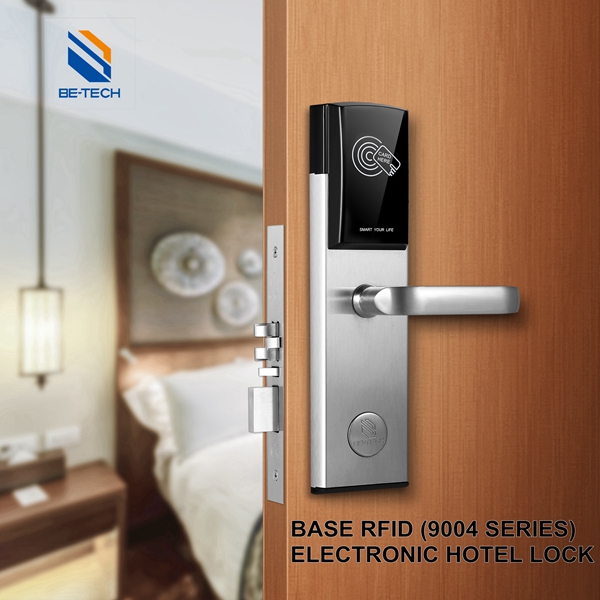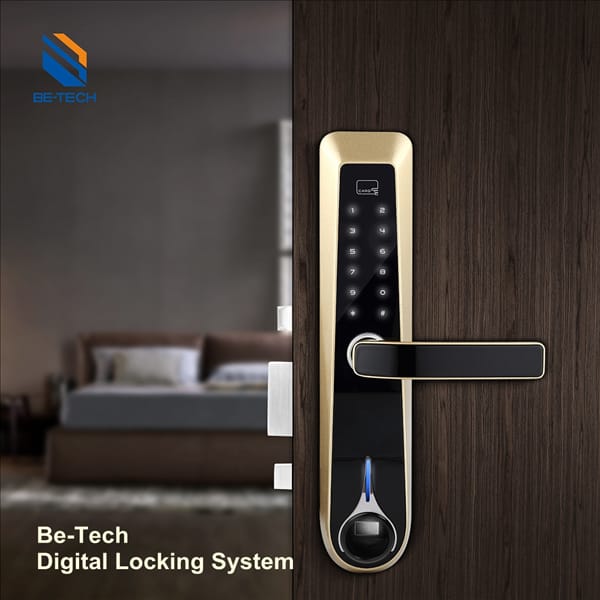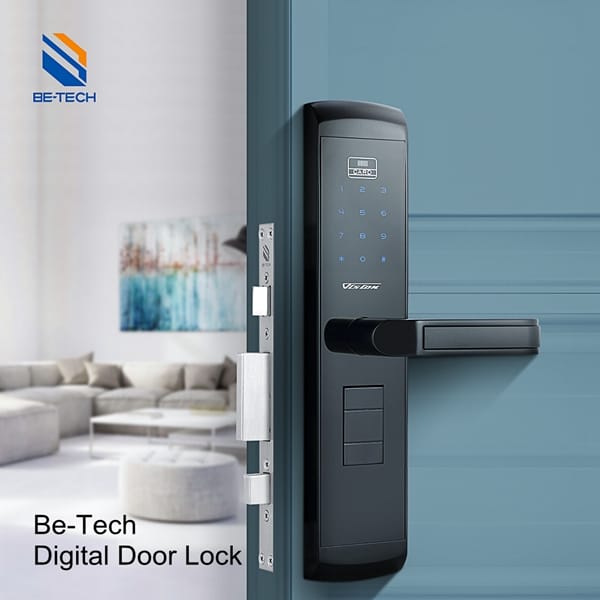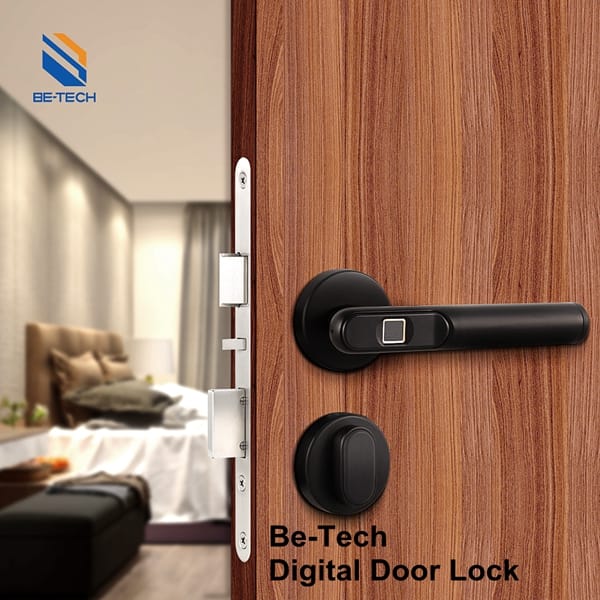Imagine being locked out of your hotel room, frantically jiggling the door handle as your key card fails to unlock the door. For hotels and resorts, a malfunctioning door lock isn’t just an inconvenience – it’s a major safety risk and a surefire way to frustrate guests. That’s where understanding uPVC door locking mechanisms comes in.
In this comprehensive guide, we’ll demystify how these increasingly popular and affordable locks work, and arm you with the know-how to troubleshoot and fix common issues. So whether you’re a hotel manager, maintenance technician, or just curious about the inner workings of your uPVC door, read on to master the mechanics behind these ubiquitous locks.
Overview of uPVC Door Lock Components
A typical uPVC door lock is comprised of several key components:
- Cylinder – The cylinder contains the keyhole and the internal components that allow the keyed mechanism to engage or disengage the lock when turned. Popular types of cylinders used on uPVC doors include euro cylinders and oval cylinders.
- Latch – The latch is the part of the lock that actually extends out to secure the door shut. When you turn the key, the latch retracts into the door, allowing it to open. The latch is spring-loaded so it extends automatically when the door is closed.
- Lock body – The lock body houses the latch and other internal components. It is mounted inside the uPVC door frame.
- Linkage – The linkage connects the cylinder to the latch. When the key is turned in the cylinder, the linkage transfers this motion to retract the latch.
- Handle – The handle is what you grip and turn to mechanically operate the lock when locking or unlocking the door from the inside. The handle connects to the linkage.
Common Lock Problems on uPVC Doors in Hotels and Resorts
1. Loose Lock Cylinder
One of the most frequent issues with uPVC door locks in hotels is a loose cylinder. The lock cylinder houses the keyway and locking mechanism. Over time, the screw securing the cylinder in the lock body can work itself loose from repeated use. This causes the entire cylinder to wobble when the key or handle is turned, compromising the lock’s function and security.
To resolve a loose cylinder, simply tighten the retaining screw to secure the cylinder firmly back in place. For heavy-duty applications like hotels and resorts, it’s wise to invest in high-quality replacement cylinders designed to withstand constant use, such as those offered by Be-Tech Locks. Their cylinders are engineered for durability and security in commercial settings.
2. Sticking or Stiff Door Latch
The latch is the part of the lock that extends out to secure the door when it’s closed. Another common problem with uPVC door locks is a sticking or stiff latch that fails to smoothly retract when the handle is turned. This can be caused by a buildup of dirt and debris in the latch mechanism, paint or damage to the strike plate, or misalignment between the latch and strike plate.
To troubleshoot a sticking latch, start by cleaning out visible dirt and spraying a lubricant like WD-40 into the mechanism. Work the latch back and forth to distribute the lubricant. Next, check the alignment of the strike plate and adjust as needed. If problems persist, the latch or strike plate may need to be replaced. Be-Tech Locks offers uPVC door locks with durable, smooth-operating latches that minimize sticking.
3. Malfunctioning Interior Door Handle
In some cases, the interior door handle may fail to properly lock or unlock the door. This is often due to a loose or broken connection between the handle and the lock mechanism. The spindle or spring connecting the interior handle to the lock assembly can come loose or wear out over time.
Fixing a malfunctioning interior handle usually requires removing the decorative handle plates to access the lock body screws. Tighten any loose screws and check that the spindle is properly seated. If the linkage is broken, the handle may need to be replaced entirely. Be-Tech Locks stocks reliable replacement handles and linkages that are easy to install.
4. Misaligned Door Latch and Strike Plate
Misalignment between the door latch and the strike plate is another leading cause of uPVC door lock issues. If the latch doesn’t properly align with the strike plate hole, the door may fail to latch shut, rattle in the frame, or be difficult to close. Improper installation, foundation settling, and temperature-related expansion/contraction can all cause the door to shift out of alignment.
To realign the latch and strike plate, start by loosening the strike plate screws. Adjust the position of the strike plate so the angled edge guides the latch in smoothly, then re-tighten the screws. Be-Tech Locks’ precision-engineered strike plates are designed to maintain proper alignment and ensure reliable latching. For severely misaligned doors, the hinges may also need to be adjusted.
5. Emergency Lockout Due to Extended Latch
Getting locked out of a uPVC door can happen if the latch is extended while the door is open, preventing normal key operation. This can occur if the door is blown shut while the latch is extended or if someone accidentally triggers the latch while the door is ajar.
If you’re locked out, you can try to retract the latch using a credit card or similar thin tool. Slide the card into the gap between the door and frame, just above the extended latch. Feel for the contoured emergency release mechanism around the lock cylinder. If you have a euro cylinder lock, apply moderate force to rotate the mechanism clockwise, which should retract the latch. Be-Tech Locks engineers their cylinders with easily accessible emergency release points to simplify this process.
Maintaining and Replacing uPVC Door Locks in Hotels and Resorts
Regular Maintenance is Key to Preventing Lock Problems
Properly maintaining uPVC door locks is essential for ensuring guest safety, satisfaction, and a smooth-running hotel operation. By regularly lubricating locks, tightening screws, and replacing worn parts, hotels and resorts can prevent many common locking issues before they cause guest inconvenience or pose security risks.
How to Lubricate uPVC Door Locks
One of the most important maintenance tasks is lubricating the internal mechanisms of the lock 1-2 times per year. This keeps components moving smoothly and prevents sticking or jamming. For best results:
- Use a dry lubricant like powdered graphite or a spray containing PTFE
- Insert the nozzle into the keyway and the gap around the cylinder
- Operate the lock a few times to work the lubricant into all moving parts
Tightening Loose Screws Prevents Misalignment
Another key maintenance step is periodically checking for and tightening any loose screws on the:
- Lock body
- Strike plate
- Door handles
- Cylinder housing
Use the properly sized Phillips or flat head screwdriver and be careful not to overtighten, which can strip threads or put excessive pressure on the lock. Keeping screws snug will ensure components stay properly aligned.
Replacing Worn Lock Cylinders
Even with regular maintenance, the constant use and stress on a hotel room door lock means the cylinder will eventually wear out, typically within 5-7 years. When this happens, it’s important to replace the cylinder promptly to maintain security and prevent guest lockouts.
High-quality replacement cylinders, like euro profile or oval cylinders from Be-Tech Locks, will restore smooth key operation and ensure guest safety. Be-Tech cylinders meet the strictest industry standards for durability and pick-resistance.
Installing New Locksets for Extensive Issues
In some cases, if a lock has extensive damage or is extremely dated, replacing the entire lockset may be the best solution. Be-Tech Locks offers a wide selection of advanced electronic hotel locks and digital locks engineered for the unique needs of hotels, resorts, and other commercial properties.
Their experienced team can help you select the ideal model for your property and budget, whether you need a standalone electronic lock, mobile access compatibility, or a fully networked access control system. They also offer professional installation to ensure your new locksets are fitted properly for reliable performance.
Here is my attempt at optimizing the provided content for search:
Why Choose Be-Tech Locks for Your Hotel or Resort?

Advanced Technology for Enhanced Security and Convenience
Be-Tech Locks is a leading provider of cutting-edge door locking solutions designed specifically for the unique needs of hotels, resorts, and other hospitality properties. Their products incorporate the latest technologies, such as:
- RFID (Radio Frequency Identification) for contactless, keyless entry
- Fingerprint recognition for secure biometric authentication
- Smart lock integration with mobile apps and property management systems
These advanced features not only enhance security by preventing unauthorized access, but also provide guests with a seamless, convenient experience that elevates their stay.
Durable, High-Quality Construction
Hotels and resorts face the challenge of high-traffic, heavy use environments that can quickly wear down inferior locking systems. Be-Tech Locks understands these demands and engineers their products with durability in mind:
- Sturdy, high-grade materials like stainless steel for long-lasting performance
- Rigorously tested to withstand constant use and abuse in commercial settings
- Designed for easy maintenance and repairs to minimize downtime
By investing in Be-Tech’s robust, reliable door locks, hotels can reduce maintenance costs and ensure their guests always have a functional, secure room.
Customizable Options for Any Property
No two hotels are exactly alike, which is why Be-Tech offers a wide range of customizable options to suit any property’s specific style, security needs, and budget:
- Various finishes and designs to complement your hotel’s aesthetic
- Configurable access permissions for different guest types and staff roles
- Scalable systems for properties of all sizes, from boutique hotels to large resorts
Whether you’re looking for a sleek, modern look or a classic, timeless design, Be-Tech can tailor their solutions to seamlessly blend with your hotel’s décor and brand identity.
Comprehensive Solutions for Every Hospitality Need
Be-Tech’s extensive product line covers all the key touchpoints in a guest’s journey, providing a cohesive, integrated experience:
- uPVC door locks for guest rooms, suites, and common areas
- Cabinet locks and safes for in-room valuables storage
- Access control systems for restricted zones like fitness centers and executive floors
- Smart locks for rental units, hostels, and vacation homes
With Be-Tech, hotels can streamline their operations and manage all their access and security needs under one unified platform, simplifying both the guest experience and back-end administration.
Expert Guidance and Support
Choosing and implementing a new locking system can be daunting, but Be-Tech’s knowledgeable team is there to guide you every step of the way:
- Consultative sales process to understand your unique requirements and recommend the best solutions
- Professional installation and configuration for optimal performance and reliability
- Comprehensive training for your staff to ensure smooth operation
- Responsive, 24/7 technical support to quickly resolve any issues that may arise
With Be-Tech as your trusted partner, you can feel confident that your hotel’s security is in expert hands, allowing you to focus on providing an exceptional guest experience.









